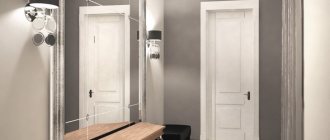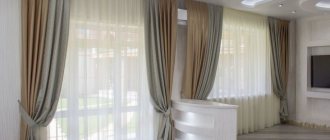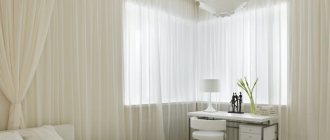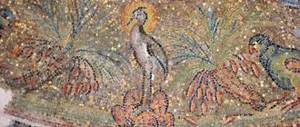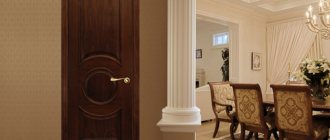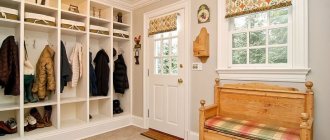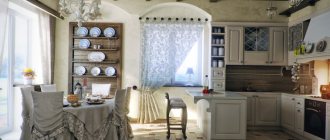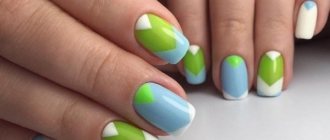Blue
The Pantone Color Institute has appointed Classic blue as the main shade of 2020 - a deep, expressive blue.
This color is suitable not only for the bedroom, but also for the home office. For example, bright, juicy blue has a beneficial effect on the nervous system and reduces aggression. This is a great tone for a bedroom or living room, especially if you have a stressful job. By the way, dark shades of blue are considered especially popular by the American paint brand Sherwin-Williams and the British Farrow & Ball.
The soft blue color will help to visually enlarge the room, “cool” the room if it is on the sunny side, and even reduce your appetite. So this shade would be an excellent choice for the kitchen or dining room.
Cool turquoise will look harmonious in an office area or creative workshop. It brings coolness, peace and helps to inspire.
Without leaving home: 6 services that will help improve your daily life during quarantine Read
Green
A favorite among designers, paint manufacturers and color researchers is muted blue-green. These tones are suitable for eco-style in the interior; they help you relax after work and feel peace while reading a book or watching a TV series. Bright decor matches green colors in the interior: for example, a coffee table, ottoman, pillows in scarlet or pink shades.
What does green look like in the interior?
In the interior, green is good because it does not distract or irritate the eye. It also gives a feeling of peace, security, stability and security. Therefore, it is suitable for absolutely any room - from the balcony to the living room.
Living room in green tones
Any shade is suitable for a green living room. But you need to know some nuances.
If you want to paint all the walls green, choose soft light shades of asparagus, moss, green tea, pistachio or gray-green.
Against the background of such walls, light furniture, parquet and interior items in white, beige and any shade of brown look great.
This is the most “natural” and natural interior. You will instantly relax in it.
Designers do not recommend painting all walls in bright shades of green (light green, apple green, spring greens, chartreuse): on large surfaces these shades become capricious, giving the room an uninhabited appearance.
So if you want to “play” with shades and textures, you can paint one wall in a bright shade and the rest of the walls in light colors.
Another interesting option: combinations of bright green shades and white-green stripes. The ideal complement to such an interior would be white upholstered furniture and green accents in the room.
But for those who love original and bold interiors, you can try a combination of green and red-orange - such a living room looks very cheerful and extravagant!
The bright pair of green plus yellow looks a little softer. These are options for those who often have guests, filling the living room with conversations, laughter and noise - it is unlikely that you will be able to relax and unwind in such a room.
However, the green color in the living room is good not only as an “edging”. You can add notes of freshness and harmony to the interior with the help of green furniture, floor coverings, textiles and interior “stuff”.
Such accents will enliven a neutral color scheme and add comfort and warmth even to a high-tech interior!
Green kitchen
When choosing a shade for a green kitchen, think about it. If the agenda is to fight extra pounds, take light green shades of the cold spectrum as your allies.
If such a problem does not bother you, you can safely paint the walls with light green paint. This color will fill the kitchen with comfort and warmth, so that everyone in your household will be drawn there like a magnet))
In addition, the choice of shade for a green kitchen will need to be coordinated with the interior design, the size of the kitchen and the style of the kitchen furniture. As you can see in the photo, bright and neon shades of green fit perfectly into high-tech, minimalism and modernism.
Provence and classic style gravitate toward calm tones of mint, herbs, green tea, olives and pistachios.
And the combination of shades of sea wave and sand will remind you of the Mediterranean. Moreover, these rules apply not only to the color of the walls, but also to the facades of the kitchen unit.
As for the room area, designers recommend warm light shades of green for small kitchens. They, unlike cold and dark tones, will not absorb light, and with it precious square meters.
Complex dark shades of malachite, emerald and pine can only be used in the design of light and fairly spacious kitchens, complementing and diluting them with warm and light tones of a beige-brown palette.
The kitchen is not a living room. Bold color schemes are also quite acceptable here. Look how bright and life-affirming duets of green, yellow and orange look.
And how stylish a pair of green plus black looks.
Combinations of shades of mint and peach, turquoise and apricot, jade and milk, bottle and ecru also look harmonious.
Bedroom in green tones
The versatility of green allows it to be used in the bedroom as well. Walls painted in natural shades of green will help create a peaceful and harmonious atmosphere.
Wooden furniture will perfectly complement the interior of a bedroom in green tones (you can even use dark brown or black tones - in this case the shade of green should be soft and muted).
If you have your eye on a bedroom set in a light or white color, then you can play with contrast by choosing a bright and rich shade of green apple, lime, chartreuse, etc.
It would be a good idea to take into account the lighting in the bedroom when choosing a color. If the windows face north and the sun is a rare guest in your bedchamber, warm shades of green (pistachio, green tea, light green) will help correct the situation.
And if the bedroom windows face south, then cool shades of mint, wormwood, jade and emerald will bring the desired freshness and coolness to the interior.
You can use green as an additional color in bedrooms with light walls.
Blankets and pillows, curtains and floor coverings, panels and lamps - all this will add “zhiznivka” to a monotonous interior.
This is especially true in the cold season - when the soul asks for sun, warmth and spring. A couple of accents in the color of young grass and lush greenery will become active fighters against winter melancholy.
There is only one “but” for a green bedroom: when choosing a texture, avoid shiny surfaces and glossy paints. Green shades look best in complex textures (this applies to both fabrics and finishing materials).
Children's room in green tones
Look at the photo - how great green looks in the interior of children's rooms!
It will help your child not only relax and fall asleep peacefully, but also improve his mood and help him concentrate while doing his homework.
Designers recommend choosing soft shades of green for walls, and, on the contrary, bright and clean shades for furniture and textiles. But if you really want juicy and bright greenery, then use it in doses, as accents.
But it’s better to avoid using marsh, olive and dark green shades in a children’s room altogether - they will look too strict and gloomy.
When choosing companions for green, consider the child's gender and age.
For kids, delicate pastel shades would be appropriate: light green plus pale pink, sky blue or light lilac.
For older children, more saturated shades (for example, apple green) combined with white and blue.
But bold pairs are also suitable for teenagers: lime and fuchsia or khaki and black.
In a girly nursery, green is best combined with shades of pink, yellow, gold, lilac and coral.
But for boys, an interior in which shades of green are combined with blue, blue, red, gray or brown is suitable.
A win-win option is green accents in a neutral interior. If you are making renovations to grow, introduce green color in the form of textiles, decorative elements or small pieces of furniture. Then, if your grown-up child wants a change, changing the scenery will not be difficult.
Another amazing property of green is that it “neutralizes” bright colors. Even an active red person will become calmer in the company of green!
Hallway in green tones
In our apartments, the hallway is far from the most spacious and bright room. Therefore, if you are not the happy owner of a large hallway, choose light and calm shades of green for the walls - they will at least visually increase the area.
It will also be successful to choose wallpaper with a large decorative pattern - this will additionally add a unique “zest” to the interior.
Well, if your hallway has high ceilings, a non-standard layout and more than enough square meters, you can afford rich shades of dark green - it would be a sin not to take advantage of the opportunity to make a hallway in such noble or unusual green tones as in the photo!
Green bathroom
Bathroom design in green tones, as seen in the photo, most often involves bright colors and contrasting combinations.
There is no place for pale, dark and yellowish shades of green in the bathroom: they contribute to an “unhealthy” appearance and do not add comfort.
The ideal combination for a bathroom is green paired with beige, brown or gold.
And, of course, the classic of the genre – green plus white.
Green color on the balcony
A balcony and a loggia are a small space, so you can’t really expand here when playing with shades and color variations. Designers recommend using one color for the walls.
And, preferably, it should be light and gentle.
Although, in my opinion, the bright color options for the balcony look great))
A balcony in green tones, as seen in the photo, is an excellent illustration of eco-style, if its companions are white and shades of brown and beige.
Grey
For quite a long time, gray was associated with boring office spaces, but modern designers have found its strength: this shade helps to dilute bright colors and reveals muted ones. Decorating a bedroom, living room, and kitchen in neutral gray tones brings harmony to the interior, creates coziness, and with the help of color and well-placed light accents it will turn your apartment into a stylish and comfortable interior for living.
Beige
Without beige shades it is impossible to imagine interior styles such as country, high-tech, Scandinavian, modern, Russian retro or eco-style. The beige color expresses elegance and restraint; you can easily and almost flawlessly combine this shade with various fabrics, bright details and decorative elements. It allows you to visually expand the space and becomes a good backdrop for bold accents in the interior.
Fashionable color fall-winter 2011-2012 - Cherry Coffee. Combination
Or deep burgundy. Rich, bold, proud. It gives your appearance a royal touch of arrogance and makes you take you seriously. Burgundy is a universal shade. It will suit all color types. In addition, this tone is slimming. The fashionable shade of Cherry Coffee has an inner strength. Although it looks discreet, its origin from red is evident, which means that it has a tonic effect.
Read also: Push without milk and butter
Consider a combination of fashionable burgundy with beige-pink, lilac, rose or “hot lips”, red, white-yellow, gold, American wormwood, Atlantis, fainting frog, Baltic, cobalt, red-violet, glycine , light beige, dark brown, black.
Brick
Soft brick, slightly burgundy shades give a feeling of comfort. But you should avoid these colors when decorating your kitchen or dining room - they are believed to sharpen your appetite.
We asked designer Olga Klimenko to give three main tips for those who do not want to make mistakes in interior design.
1. “Always start not from the color palette, but from the style that you want to adhere to in decorating the apartment.”
2. “Properly place color accents in the interior and carefully select shades. After all, time will pass, and bright yellow or dark burgundy can become very boring. And repainting the walls every six months is not an easy task.”
3. “Start decorating the interior and choosing colors by drawing up a mood board. Such a visual representation will not only help to avoid serious mistakes when selecting a palette, but will also be an excellent tool for presenting your idea to everyone who will help with the renovation, from the foreman to the designer.”
Mathematics
Don't be confused by the prefix "mono". When we talk about a monochrome interior, we mean a color palette of several related shades, and not a single color that completely absorbs the space. Such an interior can also include other auxiliary shades: neutral or contrasting. The main thing is that one of the colors dominates the space. For the rest, the correct dosage is needed.
3 universal ways to be safe from fashion mistakes in the interior
It’s good when a mistake can be corrected; it’s even better to prevent it. We'll tell you how to be safe from fashion mistakes in the interior at the renovation planning stage.
Let's turn to the classic color formula “60-30-10” (or “60-30-30”), which allows you to organically combine different shades in the interior. 60% of the visible space is occupied by the main color, 30% by an additional assistant shade, and another 10% (or 30%) receives a contrasting accent color, usually bright.
In the case of a monochrome interior, the assistant shades are close relatives of the main color, and the place of the accent color is usually taken by white, black or a neutral natural shade. It will not be possible to use exactly three colors in a space; some auxiliary tones will still appear in furniture, textiles, and decor. In a monochrome design, it is recommended to use no more than five shades.
Bright spaces where pastel shades dominate should be diluted with whitewash. If you want more clarity and dynamics, add black contrasts.
In order not to go beyond a mono color scheme, you need to pay attention to detail. The spines of books can be hidden in identical covers, household little things for which there was no place behind the facades of the storage system can be placed in plain decorative baskets or boxes.
